Файл: Учебное пособие по профессиональному иностранному языку для студентов 3 курса.docx
ВУЗ: Не указан
Категория: Не указан
Дисциплина: Не указана
Добавлен: 02.05.2024
Просмотров: 107
Скачиваний: 0
ВНИМАНИЕ! Если данный файл нарушает Ваши авторские права, то обязательно сообщите нам.
1. All countries around the globe are part of the global marketplace. As we entered into new millennium, more and more companies are going international. As a result, there are a growing percentage of their overall sales which are coming from other countries. We may argue that there has been considerable historical evolution of international markets, but in the recent years we have witnessing worldwide economic and managerial developments. These developments create the opportunities, challenges, as well as problems for managers in the global arena.
2. International business has brought the set of changes in the economic activities of almost every country in the world. One of the primary reasons is increase of foreign investment and trade. This trend has forced policy makers, managers, and entrepreneurs to refocus their efforts and look for new opportunities in the international markets. Today, every nation and increasing number of companies buys and sells products and services in the global marketplaces.
3. Understanding the business in the changing global environment is an issue which, if it is not treated carefully, may produce unexpected problems in adjusting to a new business environment. One of the major challenges of doing business internationally is to be aware and be ready to adapt different cultures. One of the key issues facing managers who are going to work in the international settings is to manage different cultures. Cultural diversity is a critical aspect of context which creates other demands from international management. As international companies begin to compete with each other in the global marketplace, the role of cross-cultural training becomes increasingly important.
4. Global environment demands a communication system that allows all segments of the business to interact with each other. This interaction makes a working place much more harmonized. Taking care of customer satisfaction requires increase of customer services. Therefore, all these efforts have one conclusion: successful international business must have ability to ensure a rapid, accurate flow of information within the organization, as well as with customers, suppliers, and other stakeholders.
(Adapted from https://irb.hr/datoteka/)
Task 3. Are the following statements (1-7) true, false or not given according to the Text A?
1. Many companies have expanded internationally in the new millennium.
2. As a result, there are a decreasing percentage of companies’ overall sales which are coming from other countries.
3. The development of international business creates the opportunities, challenges, as well as problems for managers in the global arena.
4. International business has brought a number of changes in the economy of almost every country in the world.
5. One of the major challenges of doing international business is to ignore different cultures.
6. Globalization of the financial sector has become the most dramatically developing and the most influential point of economic globalization.
7. Global environment demands a communication system that allows all segments of the business not to interact with each other.
Task 4. Match the sentence beginnings (1-7) with the correct endings (a-g) to make a short summary of the Text A. Read the Text A again if necessary.
1. As we entered into new millennium, more and more companies are ………… .
2. Today, every nation and increasing number of companies buys and sells products and services in the …………………………….
3. Understanding the business in the changing global environment is an issue which, if it is not treated carefully, may produce unexpected problems in adjusting to ……………………………………….
4. One of the major challenges of doing business internationally is to be aware and be ready to …………………………………………….
5. Cultural diversity is a critical aspect of context which creates other demands from ………………………………….. .
6. Global environment demands a communication system that allows all segments of the business to ……………………………………… .
7. Taking care of customer satisfaction requires increase of ……………… .
a) a new business environment.
b) going international
c) adapt different cultures
d) global marketplaces
e) customer services
f) international management
g) interact with each other
VOCABULARY
Task 1. Match the words in Column A with the correct definitions in Column B.
| A | B |
| 1. millennium | a) the number of items sold. |
| 2. sales | b) a set of trading conditions or the business environment. |
| 3. trade | c) to become more familiar with a new situation. |
| 4. marketplace | d) a period of 1,000 years. |
| 5. adjust | e) the activity of buying and selling, or exchanging, goods and/or services between people or countries. |
| 6. ensure | f) to continue to arrive or be produced. |
| 7. flow | g) to make something certain to happen. |
Task 2. Read the Text A again if necessary and find the words which have a similar meaning to the following.
-
accustom to a new business environment (paragraph 3) -
set up a challenge (paragraph 1) -
a short time ago (paragraph 1) -
contact each other (paragraph 4) -
partner (paragraph 4) -
some alteration (paragraph 2)
Task 3. Complete the sentences (1-6) with words in the box.
| trade stakeholder marketplace flows sales interact |
1. The …………………… is the commercial world of buying and selling.
2. The ministry had direct control over every aspect of foreign …………………
3. Efficient and secure information ………… are an important factor in the performance of decision making, processes and communication.
4. A ……………… is anybody who can affect or is affected by an organization, strategy or project.
5. ………………… include operations and activities involved in promoting and selling goods or services.
6. When people ………………… with each other, they communicate as they work or spend time together.
LISTENING
Task 1. Listen to the presentation “Globalization: business ethics final” and complete the extract with phrases (a-f) in the box below.
Globalization is defined as 1)…………… to a global or worldwide scale. The
ethical dilemma with globalization that will be discussed in this presentation relates to the labor conditions, 2)……………, and ethical implications that have been deemed controversial among different countries. The biggest conflicting factor that arises from globalization is the fact that there can be no set standard, 3)…………, and no universal law enforcement throughout the globe. These are acceptable in some countries and unlawful in others.
In this presentation, both sides will be represented, as well as 4)…………… to provide a happy medium from a worldwide standpoint.
There are opposing viewpoints in regards to globalization: advantages and disadvantages. Some advantages include lower labor costs, lower production costs, relaxed regulations, specialization, 5)……………, cultural integration, and the global community feeling.
Some disadvantages of globalization include exploitation of labor laws, unbalanced dispersion of global wealth, 6)………………, wastes finite resources, inefficient management, lack of accountability, and unbalanced global economy.
|
Task 2. Listen to the presentation again by paying more attention to some advantages of globalization and complete the sentences in the chart with words and phrases from the box.
| dollar much cheaper effectively expectations different places community feeling integration |
| Lower labor costs | In Eastern countries such as India, China, and the Philippines labor cost is 1)…………………… |
| Lower production costs | Producing goods in other countries is easier and capitalizes on the value of the 2)………………. . |
| Relaxed labor regulations | Globalizing allows companies to raise the 3)…………………….. of their employees without government interference. |
| Opportunity to specialize | Specializing in the labor force and production force allow companies to run more efficiently and 4)……………which in turn increases production and revenue. |
| Raise global economy | When you put money in 5)…………………… and throughout the world, it benefits the world. |
| Cultural integration | We want to be culturally and socially enriched, and many people believe the globalization is the key to reaching 6)…………… to become a global “melting pot”. |
| Global community | Globalization supporters suggest that working together and depending upon each other for different goods and services help to create a global 7)…………………… |
Task 3. Listen to the second part of the presentation and complete the table. Write about some disadvantages of globalization and then discuss your answers with other students.
| Exploitation of labor laws | |
| Unbalanced dispersion of global wealth | |
| Exporting costs | |
| Wastes finite resources | |
| Inefficient management | |
| Lack of accountability | |
| Unbalanced global economy | |
SPEAKING
Task 1. Work in groups of 3-4 students. Prepare a ten-minute presentation on one of following topics.
Group A: Globalization has effects on the environment.
Group B: Globalization has effects on political systems.
Group C: Globalization has effects on economic development.
Group D: Globalization has effects on human physical well-being in societies around the world.

USEFUL LANGUAGE
Explanation goals
- The purpose of this presentation ………….
- My objective today is …………..
- Starting point is………
- Let me start with some general information on ……
- Let me begin by explaining how/why……….
- I would like to give you some background information about ………
Summary and conclusion
- At the end of the presentation, you should summarize the important facts once again.
- I’d like to conclude by ………
- In conclusion, let me sum up my main points ………………….
- Thank you all for listening. It was a pleasure being here today.
- That brings me to the end of my presentation. Thank you for listening/your attention.
READING

Task 1. Match the terms in Column A with the definitions in Column B.
| A | B |
| a) the act of organizing people to accomplish the desired goals and objectives of a business. |
| b) the use of computers to store, retrieve, transmit, and manipulate data or information. |
| c) a company's plan for making a profit. |
Text B.
Task 2. Read the text bellow and then discuss the following questions.
-
What is the role of an international business manager? -
What does global management mean? -
What are the strategies of global business?
INTERNATIONAL MANAGER: JOB DESCRIPTION, DUTIES AND REQUIREMENTS
Global corporations need the same kind of management positions as any company - marketing managers, sales managers, industrial production managers - but the nature of these managers' work is slightly different. They must take multiple cultural and environmental variables into account for their decision making process. Therefore, some international management positions may have extra requirements, such as foreign language skills.
An international manager is a broad title for a manager who oversees a company's global operations. In some instances, an international manager is responsible for all of a company's foreign business. Large companies may employ multiple departmental global managers, such as those in charge of international sales, cultural marketing, or overseas manufacturing. An international manager must have a keen understanding of the company's needs abroad as well as the cultural, political and operational challenges of foreign markets and available opportunities. In addition to employee relations and business direction, budgetary and economic outlooks are key concerns of management staff. As such, an international manager should be extremely knowledgeable in finance, foreign currency and the overall global market.
Like their domestic counterparts, international managers plan a company's global strategy, often hiring and delegating authority to implement new policies and practices. International managers who oversee specific departments in sales, marketing or finance are responsible for their respective division's foreign operation. Departmental managers may report to a company executive or deliberate with other global management staff to determine business methods according to ethical and legal standards.
International managers often manage several employees or divisions existing in one or more geographical locations. While human resource duties may or may not fall within a manager's job requirements, it is the manager's responsibility to ensure employees and business practices conform to country, regional and international regulations. Decision-making, communication and leadership skills are essential for the success of international management staff.
(Adapted from https://study.com>articles)
Task 3. Are the following statements (1-7) true, false or not given according to the Text B?
1. International managers must take into consideration several cultural and environmental variables for their decision making process.
2. The cultural, political and operational challenges of foreign markets should not be taken into consideration in an international manager’s position.
3. Like their domestic colleagues, international managers plan a company's global strategy.
4. Departmental managers are able to report to a company executive or deliberate with other global management staff to determine business methods concerning ethical and legal standards.
5. An international manager focuses on business targets within one or more geographical locations.
6. It is not the manager's responsibility to ensure employees and business practices conform to country, regional and international regulations.
7. Most companies prefer candidates with a master's degree in international business.
Task 4. Match the sentences beginnings (1-6) with the correct endings (a-f) to make a short summary of the Text B. Read the Text B again if necessary.
1. An international manager is a broad title for a manager who oversees a ………
2. An international manager must have a keen understanding of the company's needs abroad as well as the cultural, political and operational challenges of foreign markets and ………………… .
3. An international manager should be extremely knowledgeable in finance, foreign currency and ……………… .
4. Departmental managers may report to a company executive or deliberate with other global management staff to determine business methods according to ………
5. International managers often manage several employees or divisions existing in …………….
6. Decision-making, communication and leadership skills are essential for the success of ………………… .
a) one or more geographical locations.
b) the overall global market.
c) company's global operations.
d) international management staff.
e) available opportunities.
f) ethical and legal standards
VOCABULARY
Task 1. Match the words in Column A with the correct definitions in Column B.
| A | B |
| 1. oversee | a) the act of separating something into parts or groups, or the way that it is separated. |
| 2. outlook | b) relating to or in accordance with an estimate of income and expenditure. |
| 3. budgetary | c) to watch or organize a job or an activity to make certain that it is being done correctly. |
| 4. implement | d) to think or talk seriously and carefully about something. |
| 5. division | e) an idea about what a situation will be like in the future. |
| 6. deliberate (v) | f) to start using a plan or system. |
Task 2. Match a line in A with a line in B to make word combinations as they are used in the text B.
| A | B |
| 1. communication | a) challenges |
| 2. operational | b) direction |
| 3. economic | c) location |
| 4. business | d) skill |
| 5. geographical | e) outlook |
| 6. international | f) counterpart |
| 7. domestic | g) regulation |
Task 3. Complete the sentences (1-6) with words from the box.
| losses budgetary deliberated implement skills requirements |
1. They ………………… for ten hours before reaching a decision.
2. Business managers have to perform several important roles to earn profits and minimize ……………….
3. An international team has been set up to .......... recent UN recommendations.
4. They are very careful about …………… control and need to understand the business case before implementing any new technology.
5. International managers always have to organize their business to adapt to local …………….. of all countries.
6. Communication ……………….. are abilities you use when giving and receiving different kinds of information.
Task 4. Form nouns, verbs and adjectives from the following words.
| Noun | Verb | Adjective |
| | | 1. budgetary |
| 2. regulation | | |
| 3. location | | |
| | 4. deliberate | |
| 5. trade | | |
LISTENING
Task 1. Watch the video with Professor Juan Carlos Pastor. Listen to him talking about the characteristics of a global manager and answer the following questions.
(https://www.youtube.com/watch?v=F4MbKuFjEKA&ab_channel=IEBusinessSchool)
1. How does globalization impact on business?
2. What is the most important challenge for a global manager?
3. What are the four competencies that a global manager possesses?
Task 2. Watch the video with Professor Juan Carlos Pastor again and discuss the characteristics of a global manager with your partner.
SPEAKING
Task 1. Work in pairs. Role-play the situation with your partner.
Things are not going so well for you at work. However, since you work for an international company, you have decided to ask for a transfer to work in another department which is located in Kazakhstan.
Student A: Ask your boss for a transfer. Give reasons.
Student B: You are the Head of Department. One of your employees wishes to transfer to the department in Kazakhstan. Find out why. Say that you wish to know if there are any problems with the department that you need to deal with.
Useful phrases:
- “Things just aren’t going so well ………….”
- “I would like to ask for a transfer ………… .”
- “I need to know the reasons for your request.”
- “There may not be anything available right now ………….. .”
Task 2. Work in groups of 3-4 students. Prepare a ten-minute presentation on one of following topics.
Culture affects international business in three core areas: communication, etiquette, and organizational hierarchy which can help an international manager to avoid misunderstandings with colleagues and clients from abroad and how to excel in a globalized business environment.

Group A: The importance of non-verbal communication between cultures in international business.
Group B: The value of strong workplace ethics.
Group C: Cultural effects on organizational structure.
GRAMMAR REVIEW: CONDITIONAL CLAUSE
| If: real conditional is used to things that are true, that have happened, or are very likely to happen. | Main clause: present tense. If clause: present simple | Oil floats if you pour it on water. |
| If: first conditional clause is used to talk about real future situations. | Main clause: will/can/may If clause: present simple | If I have time tomorrow, I will visit you. |
| If: second conditional is used to talk about present or future unreal situations. | Main clause: would/could/might If clause: past simple | If I were you, I would work on this project. |
| If: Third conditional is used to talk about unreal situations in the past. | Main clause: (should/would/might/could) + have + ed form If clause: past perfect | If you had supported that project, we would have earned much money. |
Note: An if-clause can come at the beginning or end of a sentence. When it comes first, it is often separated by a comma (,).
Task 1. Choose the correct verb forms.
1. If you (take/takes) the first bus, you’ll get there on time.
2. If Jim (lent/lends) us his car, we could go to the party.
3. She will be cold if she (doesn’t wear/didn’t wear) a coat.
4. If burglars (broke/break) into my house, they wouldn’t find any money.
5. If you (heat/had heated) water to 100°C, it boils.
6. If you (book/ booked) early, you will get a seat.
7. Plants die if they (don’t get/will not get) enough water.
8. Would you be very angry if I (failed/had failed) this project?
9. I would have gone if he (invited/had invited) me.
10. If I (had known/ know) about the plan, I would have paid more attention in that work.
Task 2. Match the sentence halves.
| A | B |
|
|
|
|
|
|
|
|
|
|
|
|
|
|
|
|
|
|
Task 3. Rewrite the following as conditional sentences.
1. I can’t call him now because I don’t know his telephone number.
If I ……………………………………………………………………………
2. Jeff met a band manager. That’s why he signed a contract with a record company.
If Jeff …………………………………………………………………………
3. I had an argument with the manager. That’s why I was fired.
If I ………………………………………………………………………….
4. I heat water to 100 degrees. So it changes form.
If I …………………………………………………………………………….
5. I didn’t work harder. That’s why I didn’t perform better.
If I …………………………………………………………………………….
6. You deliver on your business promises. That’s why your reputation doesn’t suffer.
If you ………………………………………………………………………..
7. He is an inefficient manager. His projects are not on budget.
If he ……………………………………………………………………….
8. She isn’t a good communicator. That’s why we can’t ask her to conduct the negotiation.
If she ………………………………………………………………………..
9. Employees feel valued. So they won’t go elsewhere.
If employees …………………………………………………………………
WRITING
When planning your writing, it is important to consider the best way to communicate information to your audience, especially if you plan to use data in the form of numbers, words, or images that will help you support and construct your argument. Data is commonly presented in the form of tables, charts and graphs, which makes it easier for readers to understand. However, it is often necessary to write this type of information in words, as part of a report or written assignment. If you include a graph, chart or table in your writing, you must explain very clearly what the data in it means, and why it is relevant to your report or assignment.
Tables allow readers to understand the meaning of the data presented with ease, while a disorganized one will leave the reader confused about the data itself, or the significance of the data.
Line graphs is usually used to illustrate the change of information over a period of time. They are important because they are helpful tools that can be used for things like analyzing data, emphasizing a point, or comparing multiple sets of data in a way that is easy to understand and remember.
Pie charts are widely used to show a subdivision of a whole. A circle divided into pieces like a pie cut into slices. The different pieces represent different colours with varying size to illustrate its corresponding value. A single slice can be highlighted by pulling out a slice and blowing it. Business reports use pie charts to demonstrate market research, budget, allocation of expenditure etc.
Bar graphs compare the numeric values of various units of variable through a bar. It may be a horizontal or vertical bar. One axis indicates the categories of the variables and the other axis shows the value of each category. The height or length of each bar is directly related to its value. Bar graphs are widely used by marketing companies to display the ratings and survey responses.
| Paragraph 1 Introductory statement | Start by saying what information is shown. Try to avoid repeating the same wording as the question. For example: The table illustrates some interesting facts about some of the world's most popular languages to learn. |
| Paragraph 2-3 Body | Give an overview of the most important features of the information. Be selective and choose the key observations and trends. You don't have to write about every single detail. |
| Paragraph 4 An overall sentence | Tie everything together and talk about anything significant from paragraphs 1 and 2 (3). |
Note: Don’t include your own opinion or any information that is not asked for. Don’t include too many figures in your answer.
Linking words:
| Adding information | Comparing things | Comparing time | Summarizing |
| and also in addition (to) furthermore moreover besides finally | however but whereas while as opposed to on the other hand despite in spite of similarly likewise | while meanwhile at the same time during simultaneously at this point to begin with first, second, third last then | overall all in all altogether on the whole in brief in summary to summarize in conclusion |
| Illustrating a point | Conceding something | Showing cause and effect | |
| for example for instance such as specifically especially including in other words | although even though in spite of | so therefore thus consequently as a result in order to for this reason accordingly | |
Coherence and cohesion:
-
Ideas are logically organized. -
Writing is organized into paragraphs. -
Each paragraph has one main topic. -
One phrase is connected to another phrase to make a sentence. -
Substitution. -
Using of linking words.
Task 1. Look at the line graphs (A-B) and complete the table below with the correct adverbs.
A) B)

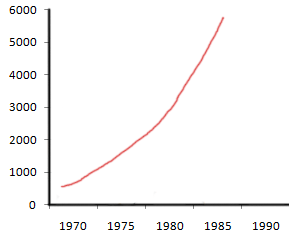
| Line graph A | Line graph B |
| | |
Adverbs: dramatically, rapidly, hugely, massively, sharply, steeply, considerably, substantially, significantly, slightly, minimally, markedly, quickly, swiftly, suddenly, steadily, gradually, slowly, abruptly, gently, modesty.
Task 2. Complete the table below with the correct verbs.
| Verbs showing upward movement | Verbs showing downward movement | Verbs showing no movement |
| | | |
Verbs: decline; decrease; drop; go down; slip; go up; fall; hold (steady at); level; grow (to); plunge; range; reach; remain; rise; dip; span; slump; soar; stay (constant at); plunge; skyrocket; peak.
Task 3. Match the visuals (a-d) with the correct names in the box.
| bar chart line graph pie chart table |
a) b)


d) e)
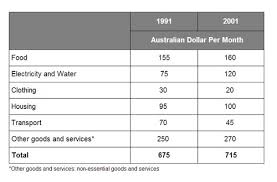
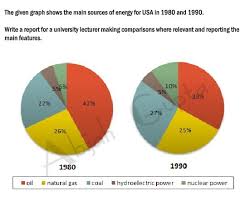
Task 4. Complete the summary with words in the box.
| percentage outstripped higher information reached |
a) The pie chart provides a breakdown of the types of language used by those on the internet by the end of 2001 and the table offers 1)……………….. about the number of people using the net as a percentage of the world’s population.
b) Overall, as the percentage of the world’s population comes online, by far the biggest number will be using English to do so.
c) Of these users the majority, a huge 43 per cent of the total, used English online. Use of English 2)………………….. all the other languages, the next most popular of which was Japanese at 8.9 per cent. Chinese was just behind at 8,8 per cent and German and Spanish were the next most frequent at 6.8 and 6.5 per cent respectively. The other languages, including Korean, Italian and French, largely 3)………………. 3 or 4 per cent at most.
d) The 4)………………… of the global population increased year on year for the given period, reaching its highest level in 2001. At this point 8.4 percent of the world’s population was online, a surprisingly low number but still much 5)…………………. than the figure in 1997, which was a mere 1.8 per cent. In the years between 1999 and 2001 the percentage of internet users had almost doubled from 4.6 to 8.4 percent overall.
Task 5. Read the summary in Task 4 again and label the paragraphs (a-d) in the correct order with phrases from the box to summarize the information.
| Introductory statement Body (2 paragraphs) An overall sentence |
Task 6. Which of these tasks (a-b) is the best for the model answer in Task 5.
a) The pie chart shows the number of people who were using different languages online. The table shows the average number of people online each year.
Summarize the information by selecting and reporting the main features, and make comparisons where relevant.
| Date | Number of millions | % of world population |
| August 2001 | 513 | 8.4 |
| August 2000 | 368 | 60 |
| August 1999 | 195 | 4.6 |
| September 1998 | 147 | 3.6 |
| November 1997 | 76 | 1.8 |
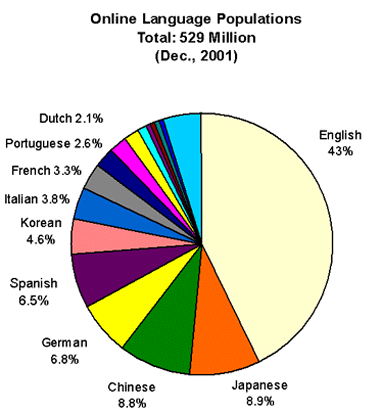
b) The charts below give information on the ages of the populations of Yemen and Italy in 2000 and projections for 2050.Summarize the information by selecting and reporting the main features, and make comparisons where relevant.
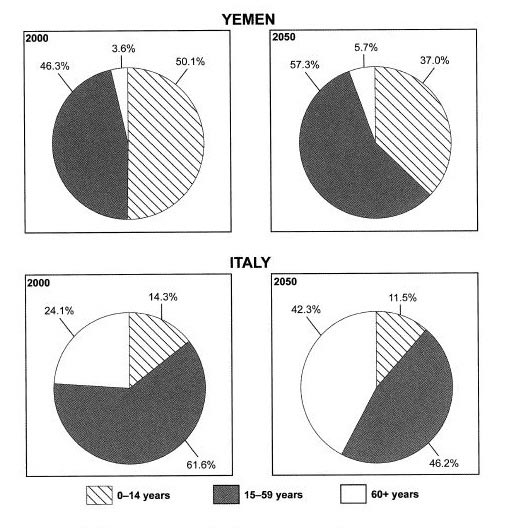
Task 7. Write a summary of at least 150 words in response to a particular bar chart.
The chart shows components of GDP in the UK from 1992 to 2000.
Summarize the information by selecting and reporting the main features and make comparisons where relevant.
